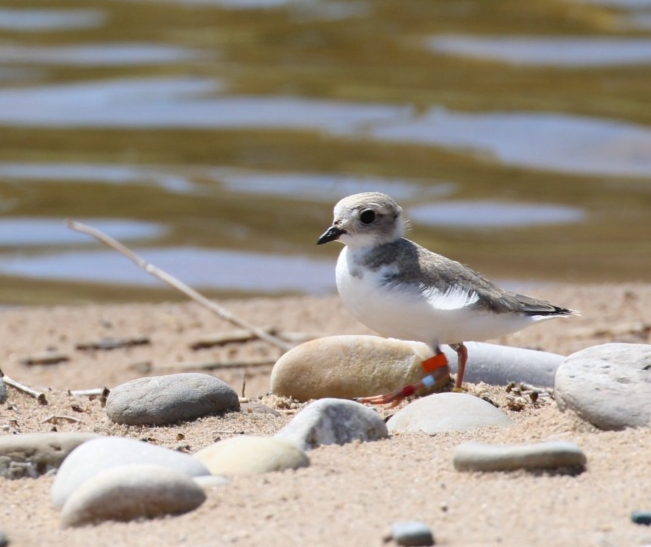Next month, U.S. Fish and Wildlife Service will be looking for the return of Joe Biden. Not the president of the United States, but an orphaned piping plover, abandoned by its mother in June, rescued by the Service, and hatched at the Detroit Zoo. Joe was rehabilitated on North Manitou Island, in Lake Michigan, a natural, safe breeding ground, and monitored until August 10, when he disappeared — only to reappear 14 days later, 1,100 miles away in South Carolina, the natural wintering home of the plovers.
Piping plovers, tiny white birds with single black rings around their necks, once nested along the shores of all the Great Lakes but habitat loss, recreational pressure and predation likely contributed to serious declines. They were named after the piping sound of their call, a sweet, soft whistle. Plovers are a group of shorebirds that feed with run-stop-peck movements, like robins. There are only three areas of North America where they are found: in the Great Plains, Great Lakes, and Atlantic Coast.
By 1948, only one pair of plovers was known to nest in Wisconsin and the piping plover was added to the state endangered species list in 1979. Across the Great Lakes region, the loss of habitat caused numbers to drop below 20 nesting pairs region-wide before the small shorebird was listed as federally endangered in 1985. The federal government has spent more than $2.7 million to save the bird, which is classified as an indicator species, or “bellwether bird.” Like canaries used to test the level of carbon dioxide and methane in coal mines, piping plovers are indications of the health of the Great Lakes shorelines. the loss of habitat during the 20th century due to industrial and residential development has played a major part in threatening the survival of this bird.
The Great Lakes variety is found n the northwest part of Michigan’s lower peninsula and southern Upper Peninsula, as well as in the Georgian Bay of Ontario. They require beaches with stones. With this intensive protection program the number of nesting Great Lakes plovers has risen from 16 pairs in 1986 to 63 pairs in 2008.
Post written by Dennis Archambault
Photo from National Park Service
